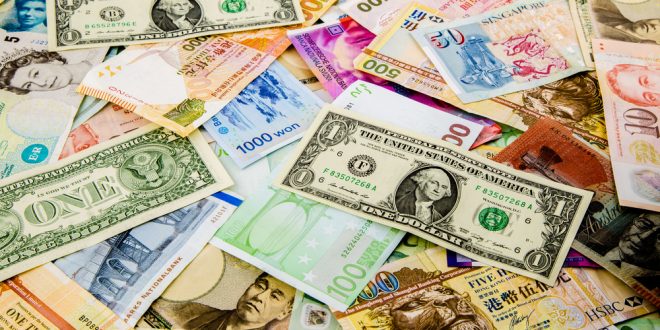The dollar remained near its highest level in two weeks against a basket of currencies on Wednesday as investors evaluated US economic data that showed a decline in jobs in the labor market, while betting that the Federal Reserve would cut interest rates next year.
Attention in Asia focused on China, where the yuan continued its losses at a time when the markets are still absorbing the impact of the credit rating agency Moody’s downgrading of the future outlook for the Asian giant.
The dollar index, which measures the performance of the US currency against six competing currencies, fell 0.029 percent to 103.93, after rising 0.3 percent overnight. The index rose 0.5 percent this month, after falling 3 percent in November, the largest monthly decline in a year.
Data on Tuesday showed that US job openings fell to their lowest levels in more than two-and-a-half years in October, the strongest sign yet that higher interest rates are weakening demand for labor.
The data also showed there were 1.34 job vacancies for every unemployed person in October, the lowest level since August 2021.
The yuan in foreign transactions fell 0.11 percent to 7.1647 per dollar, a day after Moody’s lowered its outlook for China’s credit rating to “negative.”
Reuters reported that major banks owned by the Chinese government increased dollar sales after Moody’s statement on Tuesday and continued selling dollars on Wednesday morning.
The euro rose 0.02 percent to $1.0797 after falling to its lowest level in three weeks, recording 1.07785 on Tuesday.
Investors believe that the European Central Bank may make its first interest rate cut by March. Eurozone inflation fell more quickly than most observers expected.
The pound sterling reached $1,261 in recent transactions, rising 0.13 percent during the day. The Japanese yen stabilized at 147.14 to the dollar.
The Australian dollar rose 0.53 percent to 0.659 US dollars, and the New Zealand dollar increased 0.62 percent to 0.617 US dollars.
As for cryptocurrencies, Bitcoin fell 0.69 percent to $43,591.23 after increasing to more than $44,000 earlier in the session.
 Noor Trends News, Technical Analysis, Educational Tools and Recommendations
Noor Trends News, Technical Analysis, Educational Tools and Recommendations





